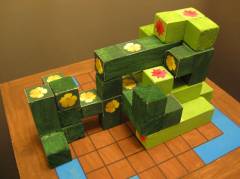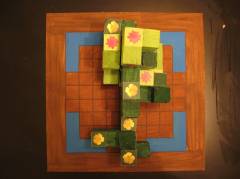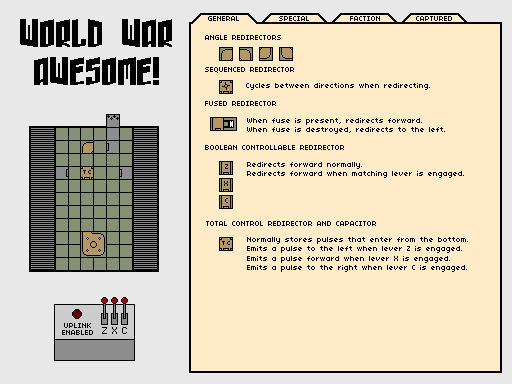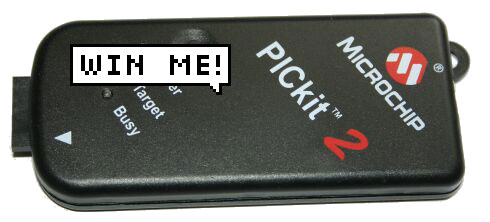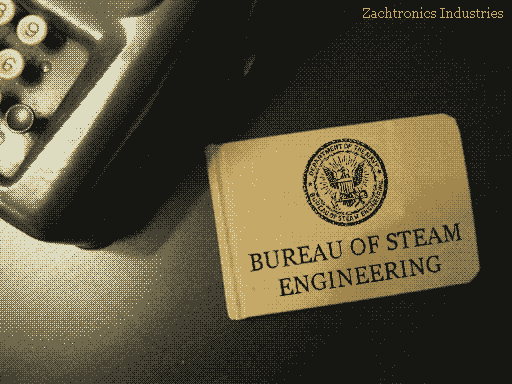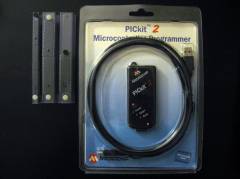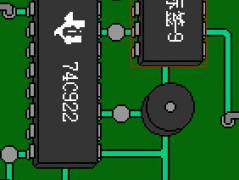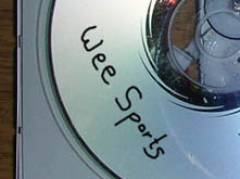I went to the mall a few weeks ago and wandered into a game and calendar store. While I don’t know what games and calendars have in common, I did discover two interesting looking games that I’d never seen before: Jakbo and Pictionary Man. From the back of the Jakbo box:
Starting from opposite sides of the board, players try to out-maneuver their opponent to cross the board and score points before all the pieces are played. Points are scored by playing your pieces in your opponent’s end. The player with the most points when the pieces run out wins! Play up, down over and around to block, defend and attack. Use the range of JAKBO pieces to discover a depth of strategy that will captivate beginners and experts alike!
Thoroughly intrigued, I set about making my own game using the contiguous block-placing mechanic. The finished product: Kudzu!
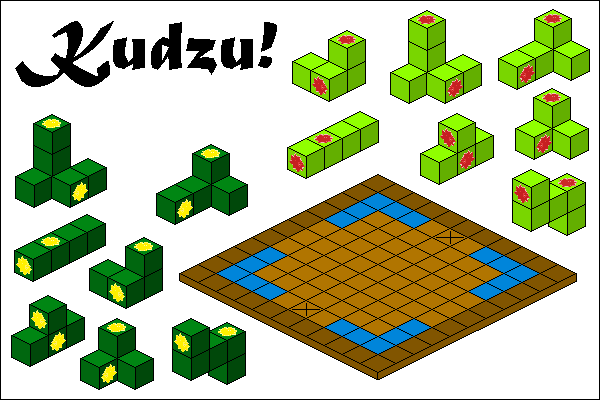
The rules of Kudzu! are simple: players alternate placing their pieces on the board until all pieces have been played. The first piece placed must touch your starting square, while the rest of your pieces must touch a piece that you previously played. A piece may only be played in a “stable” position and may not rest on, but may hover over, blue “water” squares. At the end of the game, the player with the most “flowers” facing up and not covered by another block wins. As there are only seven pieces per player, games generally take under 5 minutes, making this the only board game I’ve ever made that can be played in under four hours.
In the above picture, dark green beat light green 5 to 3.
Surprisingly, it’s not a bad game. It only took me a few hours to build the above prototype; all you need to build your own is a sheet of wood for the board and 64 cubes to glue together to create the pieces, and perhaps some paint to make it look nice.



